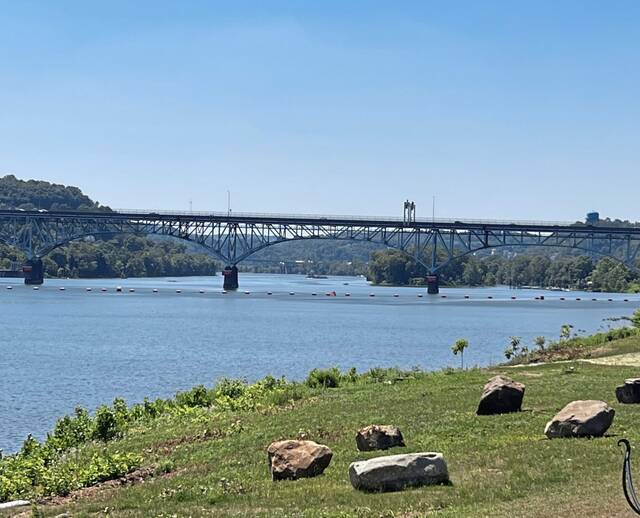'Special' Allegheny River recognized as River of the Year
State officials recognized the Allegheny River as the River of the Year during a celebration Saturday at Aspinwall’s Allegheny RiverTrail Park.
“The Allegheny River is an important part of Pennsylvania’s natural history and beauty, so it is great to celebrate all that the river offers and its impact on the commonwealth at the River of the Year Sojourn,” said Claire Jantz, deputy secretary of the state’s Department of Conservation and Natural Resources.
“Congratulations to Three Rivers Waterkeeper and the community of supporters who uplifted this special river.”
Three Rivers Waterkeeper, an organization aimed at protecting the water quality of the Monongahela, Allegheny and Ohio rivers and their watersheds, nominated the Allegheny River for the award. The organization will get a $10,000 grant to help fund a slate of yearlong River of the Year activities.
“We were so excited to see everyone who came out Saturday to show their support for the Allegheny River,” said Jess Friss, director of community programs at Three Rivers Waterkeeper. “We remain dedicated to protecting the water quality of the Allegheny River and all its uses, are excited to have the support of the community and the collective commitment to environmental stewardship, recreation and love for our waterways.”
The Allegheny River starts as a stream in Northcentral Pennsylvania and meanders through a field before crossing briefly through New York, later into six counties in Western Pennsylvania, according to the DCNR. The river totals 325 miles and ends in Pittsburgh, where it meets the Monongahela River and flows into the Ohio River.
Historically, the fertile valleys and abundant biodiversity have led many communities to call Pennsylvania home, including the O-non-dowa-gah (Seneca Nation) who call the Allegheny Ohi:yo’, or beautiful river; the Lenni Lenape (Delaware Nation) who named it welhik-heny, or most beautiful stream; and French settlers who referred to it as La Belle Riviere, according to the DCNR.
In the early 20th century, locks and dams were built to make the river navigable for barges to transport goods. The river includes the Allegheny Islands Wilderness, a seven-island, 372-acre preserve with old-growth hardwoods and prolific bird populations.
The U.S. Forest Service has documented more than 50 types of mammals, 200 birds, 25 amphibians, 20 reptiles, 80 fish and 25 freshwater mussels in and around the Allegheny, including the threatened salamander mussel, which helps to improve the water quality by filtering out sediment and pollutants, the DCNR said.
Kellen Stepler is a TribLive reporter covering the Allegheny Valley and Burrell school districts and surrounding areas. He joined the Trib in April 2023. He can be reached at kstepler@triblive.com.
Remove the ads from your TribLIVE reading experience but still support the journalists who create the content with TribLIVE Ad-Free.

